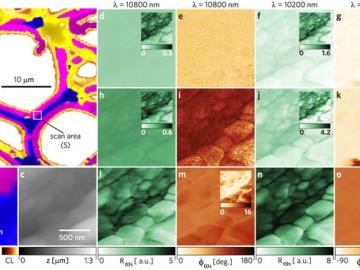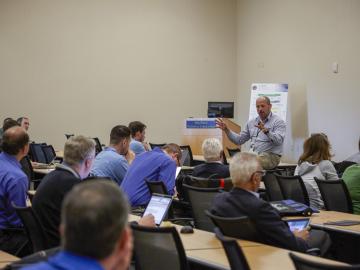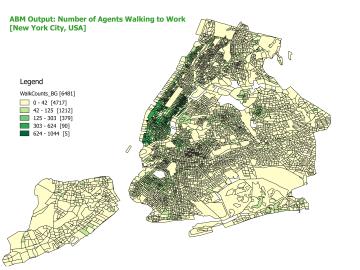ORNL's Communications team works with news media seeking information about the laboratory. Media may use the resources listed below or send questions to news@ornl.gov.
391 - 400 of 1144 Results


Oak Ridge National Laboratory has successfully developed and tested a novel sand casting technique to quickly design complex patterns to fabricate components for industry partner Emrgy Hydro, makers of hydropower devices designed to generate electricity from slow or shallow water flo...
![Scientists synthesized porous hollow carbon spheres (HCS, shown in pink), incorporated them in a triblock copolymer (PS-PEB-PS, two blocks of polystyrene flanking a block of poly[ethylene-ran-butylene]) matrix and spin cast the mixture to create a robust Scientists synthesized porous hollow carbon spheres (HCS, shown in pink), incorporated them in a triblock copolymer (PS-PEB-PS, two blocks of polystyrene flanking a block of poly[ethylene-ran-butylene]) matrix and spin cast the mixture to create a robust](/sites/default/files/styles/list_page_thumbnail/public/news/images/02%20chemistry%20tip_1.jpg?itok=Qc0odmxi)




Three of eight cyber technologies to be showcased at the 12th Annual Cyber and Information Security Research Conference April 4-6 were developed at Oak Ridge National Laboratory, which will host the event. The conference attracts hundreds of the nation’s premier cyberspace researcher...

Significant energy savings could be realized by the Department of Defense with the deployment of a low-cost vacuum insulation panel developed with help from researchers at Oak Ridge National Laboratory. A team led by Kaushik Biswas is evaluating how wall retrofit solutions can cut...


Simply widening sidewalks and increasing the bike lanes network can boost the number of New York City commuters who choose to take advantage of an option that’s healthy for people and the environment, according to Husain Aziz of Oak Ridge National Laboratory’s Urban Dynamics Insti...

